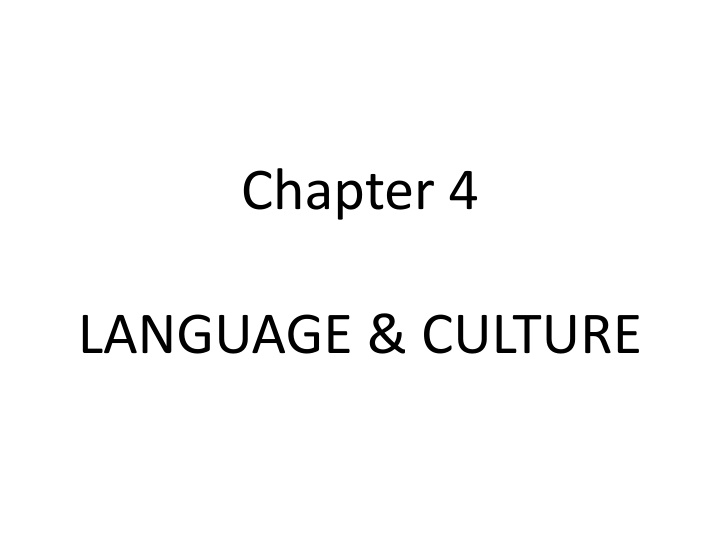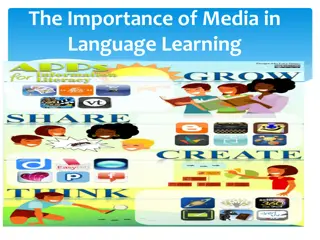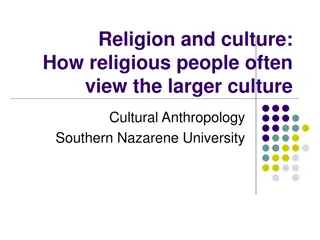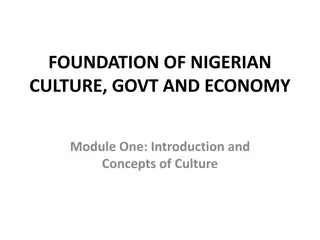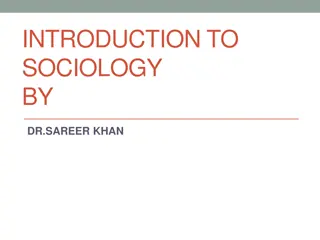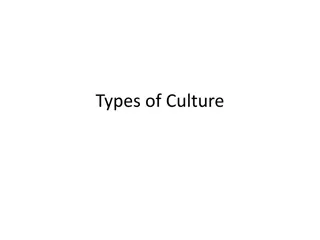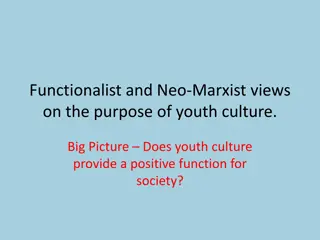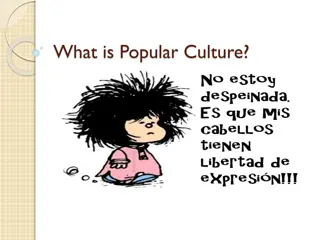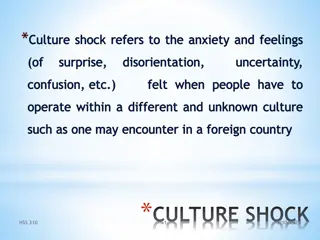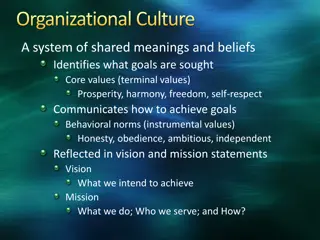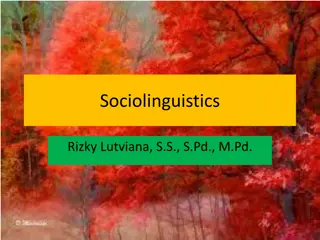LANGUAGE & CULTURE
Scientists have observed dialectical variations rooted in cultural factors, shaping our conceptual systems. Through language, we acquire socially embedded knowledge, categorizing the world around us. Different languages lexically encode distinctions, influencing how we perceive kinship terms, time concepts, and social categories. The concept of linguistic relativity explores how language structures influence thought processes and cultural understandings.
Download Presentation

Please find below an Image/Link to download the presentation.
The content on the website is provided AS IS for your information and personal use only. It may not be sold, licensed, or shared on other websites without obtaining consent from the author.If you encounter any issues during the download, it is possible that the publisher has removed the file from their server.
You are allowed to download the files provided on this website for personal or commercial use, subject to the condition that they are used lawfully. All files are the property of their respective owners.
The content on the website is provided AS IS for your information and personal use only. It may not be sold, licensed, or shared on other websites without obtaining consent from the author.
E N D
Presentation Transcript
Chapter 4 LANGUAGE & CULTURE
Scientists have noticed that dialects differ not only for social variations but also for other cultural factors. This approach to the study of Language originated in the work of Anthropologists who have used language as a source of information in cultural studies.
Culture Culture: All the ideas and assumptions about the nature of things and people that we learn when we become members of social groups. Def. socially acquired knowledge We acquire without conscious awareness The language we learn provides us with a ready-made system of categorizing the world around us and shaping our experience. We learn by time how to categorize the distinction between different concepts./ thus, we develop a more elaborated conceptual system that is relevant in our social world/culture. E.g. dog or horse for a child is just a bow-wow Some of the cultures do not have horses so they don t have that concept in their language
Categories Category: A group with certain features in common. The vocabulary we learn through our first language is the set of category labels we inherent./ they r the words we use for referring to concepts. Organization of external reality varies according to the language being used to talk about it. E.g. rain coconuts dates Colors for New Guinea speakers and English speakers. Clip # 2 (colors, directions, & snow) Thus, there are conceptual distinctions that are Lexicalized: expressed as a single word in one language and not in the other.
Kinship terms Kinship terms: One of the examples of lexicalized categories: words we use to refer to members of the family. E.g. father & uncle in English vs. other languages lexicalized the distinction in English female parent s brother /the distinction isn t lexicalized in English./ but it is in Arabic ( \ ) Age is also important in some languages for the distinction between family members./ Mayan e.g. Norwegian the distinction between male parent s mother & female parent s mother is lexicalized but not in English nor in Arabic.
Time Concepts An abstract e.g. of conceptual system. English has words for units of time two days / shows that we think of time in amounts the same way we treat physical things two people In Hopi lang. time is not treated the same/ no terms Clip # 3 (Hopi and their time concept)
Linguistic Relativity First proposed by European linguists in the 18thc. to analyze the connection between language & culture. Linguistic Relativity: Our Language influences our thought/ the structure of our language, with its predetermined categories, affects how we perceive the world./ first language. weak version Linguistic Determinism: Language determines thought/ suggests we are prisoners of our own lang., i.e., we will only be able to think in the categories provided by our language. strong version Language Thought E.g. snow for English speakers vs. Eskimos Clip # 1
The Sapir-Whorf hypothesis Sapir-Whorf hypothesis: 20thc. / American linguists They suggested that: the language of the Hopi led them to view the world differently from those who spoke European languages. E.g. time to the Hopis as duration not exact numerals Different distinction between animate & inanimate in their grammar/ they treat clouds & stones as living creatures because their lang led them to do so Unlike English speakers, because their grammar does not mark them as animates
Arguments presented against the hypothesis: French lang uses feminine grammatical structure with some inanimate things, however they do not believe that they are female entities just like woman la femme E.g. la pierre/ stone la porte/ door Therefore, while the Hopi language has a particular classification for stone , it does not mean the people worry about stepping on living creatures when they step on stone.
It is the human who is thinking about the experience and determining what will be expressed, not the other way around (not the language) E.g.1/ Snow English does not lexicalize the distinction between different forms of snow unlike the Eskimos./ however, English speakers manipulate their language to refer to different kinds of snow (powdery snow, dirty snow ) So, we cannot say that language controls thought, but, it is thought that determines language Thought Language
E.g. 2/ Dates- coconut- rain- money - Our languages reflect our concern We inherit the language we use to report knowledge, and we also inherit the ability to manipulate and be creative with that language in order to express our perceptions. If thinking and perception were determined by language then the concept of language change would be impossible! E.g. 3/ computers Human manipulates the language not the other way around.
Cognitive Categories We can look at language structure as a way of analyzing cognition (i.e. how people think) The Hopi treat clouds and stones as animate entities in their language system/ thus it can tell us sth about their culture and how they think/ as having special importance in life and not as having life as in English.
Classifiers Classifiers: Grammatical markers that indicate the type or class of noun involved. As a type of cognitive categorization. In Swahili (prefixes are used as classifiers to distinguish between humans and non-humans) Japanese e.g. (classifiers are associated with the shape of the objects) English e.g. (classifiers are mostly associated with expressing quantity/ unit of ) Countable (a shirt/ an apple) Non-countable (expressions: a piece of furniture / a bit of information )
Social Categories Social Categories: Categories of social organization that we can use to say how we are connected or related to others. E.g. uncle/ brother Can be used for close friends as well as family members. We can use these words as a means of social categorization, that is, marking individuals as members of a group defined by social connections.
Address Terms Address Terms: A word or phrase for the person being talked to or written to. They function as social category labels. Solidarity/ being the same in social status brother Unequal relationship/ higher or lower status Sir Titles (Dr. / professor) Equal relationship/ similar status First names / nicknames jenny Pronouns/ socially close vs. distant Old English (thou/ you)
In English, people without special titles are addressed as: Mr., Mrs., Miss, Ms. Only the women s address terms include information about their social status.
